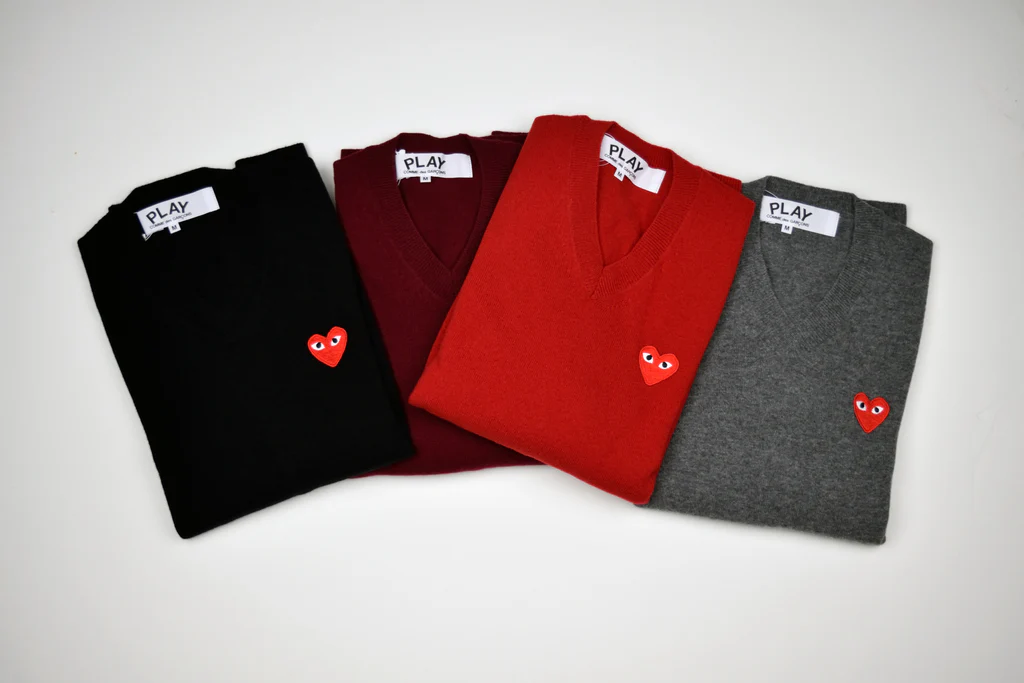In the world of fashion, few names carry the same weight and intrigue as Comme des Garçons. Known for its avant-garde designs and deconstructed silhouettes, this Japanese label has redefined what it means to dress creatively. Since its founding in 1969 by Rei Kawakubo, Comme des Garçons has continually challenged conventional notions of beauty, form, and function. What began as an experimental project in Tokyo has evolved into a global fashion empire, influencing designers, artists, and culture at large.
The Visionary Behind the Brand
At the heart of Comme des Garçons lies the artistic genius of Rei Kawakubo. Unlike many designers who seek to flatter or embellish the human form, Kawakubo’s philosophy revolves around questioning aesthetic norms. She has often said that she designs “for the mind, not the body,” which perfectly encapsulates her approach to fashion as a form of intellectual expression rather than mere decoration.
Born in Tokyo in 1942, Kawakubo did not train formally in fashion design. Her background in fine arts and literature at Keio University laid the foundation for her conceptual approach. When she launched Comme des Garcons, her goal was to create clothes that transcended gender, beauty, and tradition. The name itself translates to “like boys,” symbolizing her early rejection of feminine stereotypes in clothing.
The Birth of a Fashion Revolution
Comme des Garçons first gained international recognition in the early 1980s when Kawakubo debuted her collection in Paris. The show sent shockwaves through the fashion world. Models walked the runway in oversized, asymmetrical garments, mostly in shades of black and gray. Critics initially labeled it “anti-fashion,” but it was this bold defiance that made Kawakubo an icon of creative freedom.
Her designs were often described as intellectual and challenging, inviting audiences to think rather than merely admire. By rejecting symmetry, polish, and predictable beauty, Kawakubo opened the door for a new kind of fashion—one that prioritized expression over perfection.
The Evolution of Comme des Garçons Clothing
Over the decades, Comme des Garcons clothing has evolved but never lost its experimental spirit. From raw, deconstructed tailoring to abstract silhouettes and unexpected fabric combinations, the brand has remained on the cutting edge of design. Each collection tells a story, not through words, but through shapes, textures, and layers.
Kawakubo’s seasonal shows are more like art installations than fashion presentations. Her garments often blur the line between clothing and sculpture, forcing the viewer to question what fashion truly is. Some collections explore themes of love, fear, or death, while others tackle broader cultural or philosophical ideas.
The use of nontraditional materials—rubber, metal, or paper-like textiles—further distinguishes Comme des Garçons from mainstream luxury fashion. Every piece embodies a dialogue between chaos and control, destruction and creation.
The Influence on Modern Streetwear and Collaborations
While Comme des Garçons started as a high-concept brand, its influence eventually extended into mainstream fashion and streetwear. Through its various sub-labels and collaborations, the brand reached new audiences while maintaining its avant-garde essence.
One of the most iconic partnerships in the world of sneakers is cdg converse, a collaboration that perfectly merges high fashion with street style. The playful heart logo designed by artist Filip Pagowski has become instantly recognizable across the globe. This partnership demonstrated that avant-garde fashion could coexist with everyday wear, making Comme des Garçons accessible without compromising its artistic integrity.
Another key project is Comme des Garçons Shirt, a sub-label that takes a more wearable and casual approach while retaining the brand’s experimental DNA. The line reimagines the classic button-down shirt, often through unusual patterns, asymmetric cuts, or layered construction. This fusion of simplicity and innovation shows how the brand’s core philosophy adapts to modern lifestyles.
Sub-Labels and Expansion of the Comme des Garçons Universe
Over time, Rei Kawakubo expanded her creative universe through multiple sub-labels, each with its own identity and purpose. Comme des Garçons Homme, Comme des Garçons Play, Comme des Garçons Noir, and Comme des Garçons Girl cater to different markets but share the same creative foundation.
Comme des Garçons Play, in particular, gained immense popularity for its minimalist aesthetic and the now-iconic heart-with-eyes logo. It appeals to a younger audience who appreciate the blend of luxury and casualness. Yet even this line, more commercial than others, retains a subtle quirkiness that distinguishes it from mass-market brands.
Beyond clothing, Comme des Garçons has also ventured into perfumery, producing scents that are as unconventional as its garments. The perfumes often feature smoky, woody, and metallic notes—aromas that defy traditional notions of femininity or masculinity, just as Kawakubo’s clothes do.
The Comme des Garçons Aesthetic
The aesthetic of Comme des Garçons cannot be confined to a single definition. It’s a paradoxical blend of destruction and beauty, rebellion and refinement. Common elements include asymmetry, layering, exaggerated proportions, and an abundance of black. Yet, Kawakubo often surprises audiences with bursts of color, tulle, or polka dots in later collections.
Her designs frequently challenge gender norms. From the beginning, she envisioned clothing that could be worn by anyone, regardless of sex. This androgynous vision inspired a generation of designers and played a crucial role in the rise of unisex fashion.
Even when pieces appear chaotic or unfinished, they possess a deliberate precision. Every frayed edge, every uneven hemline, tells a story about imperfection and individuality. In a world obsessed with perfection, Comme des Garçons celebrates the beauty of the incomplete.
The Cultural Impact of Comme des Garçons
Beyond fashion, Comme des Garçons has left a profound cultural imprint. The brand’s influence extends into art, architecture, and music, often collaborating with artists who share its avant-garde vision. Kawakubo herself has curated exhibitions and designed retail spaces that defy traditional layouts. Her stores are experiential, often resembling art galleries rather than boutiques.
The Dover Street Market—founded by Kawakubo and her husband, Adrian Joffe—is a perfect example of her revolutionary approach to retail. This multi-brand concept store, with locations in cities like London, Tokyo, and New York, merges high-end fashion with experimental art installations. Each space evolves continuously, encouraging discovery and reinvention.
Celebrities, musicians, and creative thinkers frequently gravitate toward Comme des Garçons for its authenticity. Figures like Kanye West, Pharrell Williams, and Rihanna have been spotted wearing its pieces, proving that true artistry transcends trends.
Comme des Garçons and the Future of Fashion
In an era dominated by fast fashion and digital trends, Comme des Garçons remains a symbol of integrity and innovation. Rei Kawakubo has always resisted the pressure to conform, continuing to push boundaries in both design and philosophy.
Her commitment to creative independence ensures that Comme des Garçons continues to inspire new generations of designers who see fashion as a medium of expression rather than commerce. Even after decades in the industry, Kawakubo’s approach remains refreshingly unpredictable.
The future of Comme des Garçons clothing lies in its ability to stay true to its roots while embracing change. Through its many collaborations, from Comme des Garcons Shirt to cdg converse, the brand manages to blend the intellectual with the accessible. This balance ensures its relevance across cultures, styles, and generations.
Conclusion: A Legacy Beyond Fashion
Comme des Garçons is not just a brand—it is a movement, an idea, and a philosophy. It represents the freedom to think differently, to question norms, and to redefine beauty on one’s own terms. Rei Kawakubo’s vision has proven that fashion can be both conceptual and commercial, intellectual and emotional.
From the runways of Paris to the streets of Tokyo, Comme des Garçons continues to challenge the boundaries of creativity. Whether through avant-garde collections or collaborations like cdg converse, the brand remains a beacon of artistic rebellion.
Ultimately, Comme des Garçons clothing reminds us that fashion is not about fitting in—it’s about standing out, thinking deeply, and expressing who we truly are. Through every stitch and silhouette, the brand tells a story of courage, imagination, and timeless innovation—a legacy that will continue to inspire for generations to come.


Leave a Reply